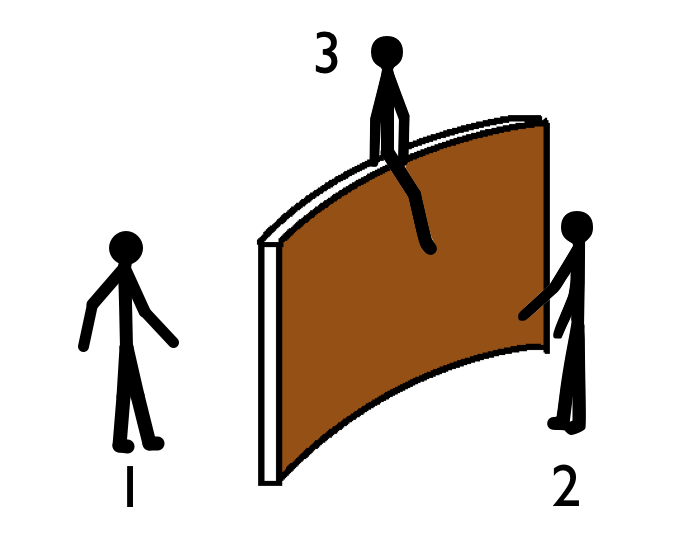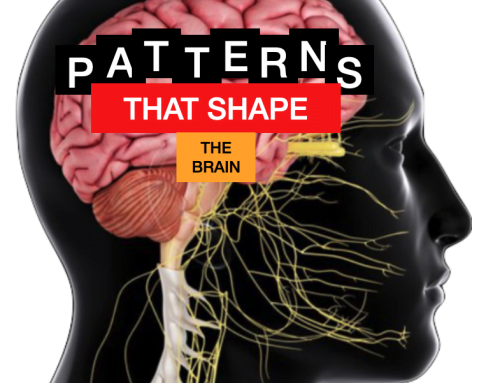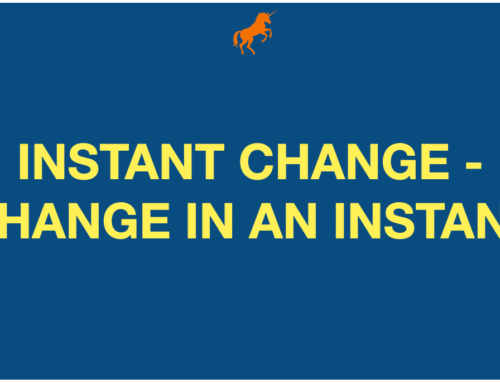One of the most popular exercises in our range of professional development training courses is one that comes from the world of NLP and is called Perceptual Positions.
How easy do you find it to take a multiple perspective on things? How often to you walk in another persons shoes, so to speak, in order to get a slightly different view of things? This is an exercise that is really useful in a coaching environment.
Perceptual Positions does not look at two but actually three different perspectives and it is otherwise known as a triple description.
The principle is, do not evaluate, do not judge a person or a situation until we have gained knowledge through multiple perspectives.
Why should we gain other perspectives on things do you think? Do not forget that we all have our own way of viewing the world, mine will be different from yours and so on. People interpret events differently, which is why they end up with different models of the world.
When I was a sales manager I sometimes went into meetings with my boss and as I went into the meeting I was full of energy, smiling, cheerful, my boss usually had a face like thunder. After a couple of hours together however, I could feel the energy seeping out of me and I didn’t feel like smiling any more!
I had got so good at empathising with my boss, that I had assumed their problems and their world. My boss, on the other hand, usually ended the meeting saying that they felt much better and had their energy back. Marvellous!!
Being able to take a third perspective here and see things from a neutral standpoint would have helped me to empathise in the same way, but would have enabled me to stay out of assuming their emotional position, taking on their baggage.
Would you think that that would be useful for you?
Perceptual positions allows us to take three perspective on a situation. It is a way of seeing not just another persons point of view but also a detached point of view. Looking from a neutral standpoint objectively at the situation to gain further incites. Incites that will allow us to be more flexible, more creative in our behaviour in that particular situation.
Position 1 is seeing things from our own perspective, looking through our own eyes as we do in any communication, being ourselves.
Position 2 is looking at the situation from another persons perspective, seeing things from their point of view, as if we are them, describing the events from their world, entering their model of the world. Tune into the other persons thinking, tune into their feelings.
Position 3 is a neutral point of view, looking at the situation as a whole, what can we learn from this situation looking at it from afar, from an interested observers point of view? What can we learn that will help us understand this situation better?
This is about systems thinking. If you are in the system you are unable to transform it, you have to step out of that system in order to truly assist in the transformation.
In a problem situation you are part of the problem and therefore you need to step out of it to find the solution. So, position 3 allows us to find that sense of detachment. Position 3 has no feelings, it allows logic to rule.
Thinking about practical applications. Can you think of someone that you are having an issue with at the moment? Or in the past maybe you had an issue with someone that was left unresolved?
Whilst the issue or problem remains unresolved you continue to be in the system so to speak, you are part of the problem between you and the other person. It is only by taking the third position that you can lift yourself out of the problem loop.
Think about what you do when you are struggling to resolve any problem. Do you ever ask for advice, maybe from a friend? That is seeking a different perspective, a third position.
An arbitrator is in the third position.
This is a great model for one to one work, for coaching, for appraisal, for consultancy.
So, here is the exercise.
You will need three chairs, or three places that you can stand to do this.
If you are doing this on your own, think of a situation that you are in now where you have an issue with someone, or think of a time in the past when you have had an issue with someone.
Take the first position and get back to the time of the issue. Stand or sit in position 1. Be yourself, feel what you were feeling during the conversation, hear what you were saying and hear what the other person was saying, see how you were reacting and how they were reacting to you.
Once you have fully regained that perspective what I would like you to do is to step out of that position. Throw off all of those feelings, by taking a deep breath, and move over to assume position 2. In position 2 you are assuming the position of the person that you were having the issue with. Take their point of view, see things as if through their eyes, feel what they were feeling, hear what they were saying and how you were replying. Become the other person. As you describe the situation really get into their identity. Describe things from their position, Eg. If I was completing the exercise, I would assume the other persons position and may say ‘I did this and that and Anthony responded in such and such a way.’
When you have a level of understanding from that position move out of position 2, take a deep breath and shake off the feelings of that position, and move over to position 3. This is the Meta position as described in NLP. In this position get a sense of what the situation is from both perspectives. Describe the events or the conversation as if you were not in it but as if you were looking down on it from a neutral position. ‘Anthony did this and whomever responded in this way or that.’ If you are finding it tricky to get a proper perspective then you can move your chair further away, stand further back.
Do things look different from here? What can you learn from this situation?
Take the learnings and if necessary then go back to position 1 and position 2 and notice any changes in how things feel and look in these positions. Go round as many times as necessary to take the learnings.
We carry out this exercise as part of our Sales Training in order to enable sales people to perfect their sale pitch.
Learn how to facilitate others to benefit from this exercise on our Communication Skills Training, Life Coaching Training Courses, and in our NLP Training, this is an NLP Diploma/NLP Practitioner level exercise.
You can take any of these trainings online via our NLP Academy centre.







Leave A Comment